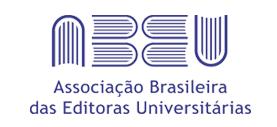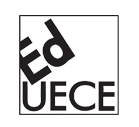Theoretical principles on needs analysis for designing courses on Languages for Specific Purposes
DOI:
https://doi.org/10.46230/2674-8266-15-8611Keywords:
Needs analysis, Languages for specific purposes, Learning needs, Target situation, LinFEAbstract
Needs analysis becomes a key feature to plan any course based on a Languages for Specific Purposes (acronym in Portuguese: LinFE) approach. The main focus of this diagnosis is to identify the real learning needs and the target situation of the learners. This article aims to discuss theoretical assumptions about needs analysis since it becomes the primary basis for planning and organizing courses on a LinFE approach, such as Portuguese or foreign languages. It is based on a critical and bibliographic review on the subject (HOLMES, 1981; HUTCHINSON; WATERS, 1987; ROBINSON, 1991; DUDLEY-EVANS; ST. JOHN, 1998). The article also focuses on several instruments for carrying out the needs analysis, such as questionnaires, interviews, observation, data collection, texts used in the courses, informal consultation with sponsors, apprentices, among others. In addition to analyzing the learner's needs, the discussion points out that it is still considered as a presupposition for any LinFE course: the knowledge of the target situation, the specific objectives related to the needs and the relationship with the learner's knowledge of the area of study.
Downloads
References
BERWICK, R. Needs assessment in language programming: from theory to practice. In: JOHNSON, R. K. (org.). The second language curriculum. Cambridge: Cambridge University Press, 1989. p. 48-62. DOI: https://doi.org/10.1017/CBO9781139524520.006
BRINDLEY, G. The role of needs analysis in adult ESL programme design. In: JOHNSON, R. K. (org.). The second language curriculum. Cambridge: Cambridge University Press, 1989. p. 63-78. DOI: https://doi.org/10.1017/CBO9781139524520.007
CELANI, M. A. A. Ensino de línguas estrangeiras: olhando para o futuro. In: CELANI, M. A. A. (org.). Ensino de segunda língua: redescobrindo as origens. São Paulo: EDUC, 1997. p. 147-161.
COLLINS, H. Wide-scope needs analysis: requirements and feasibility. In: PASCHOAL, M. S. Z.; CELANI, M. A. A. (org.). Linguística Aplicada: da aplicação da linguística à linguística transdisciplinar. São Paulo: EDUC, 1992. p. 179-192.
DUDLEY-EVANS, T.; ST JOHN, M. J. Developments in English for specific purposes: a multi-disciplinary approach. Cambridge: Cambridge University Press, 1998.
GRAVES, K. Designing language courses: a guide for teachers. Boston: Heinle e Heinle, 2000.
HOLLIDAY, A.; COOKE, T. An ecological approach to ESP. In: Issues in ESP: Lancaster practical papers in English language educational 5. Lancaster: Lancaster University Press, 1982. p. 123-143.
HOLMES, J. What do we mean by ESP? Projeto Nacional Ensino de Inglês Instrumental. Working Paper 2, CEPRIL, PUC-SP, São Paulo, 1981.
HOWATT, A. P. R. A history of English language teaching. Oxford: Oxford University Press, 1984.
HUTCHINSON, T; WATERS, A. English for specific purposes: a learning-centered approach. Cambridge: Cambridge University Press, 1987. DOI: https://doi.org/10.1017/CBO9780511733031
LONG, M. H Second language needs analysis. Cambridge: Cambridge University Press, 2005. DOI: https://doi.org/10.1017/CBO9780511667299
MUNBY, J. Communicative syllabus design. Cambridge: Cambridge University Press, 1978.
NUNAN, D. Second language teaching and learning. Heinle & Heinle Publishers, 1999.
ONODERA, J. Análise de necessidades do uso da língua inglesa na execução de tarefas em uma empresa multinacional. 2010. 119 f. Dissertação (Mestrado em Linguística Aplicada e Estudos da Linguagem). Pontifícia Universidade Católica de São Paulo, São Paulo, 2010.
RAMOS, R. C. G. De instrumental a LinFE: percursos e equívocos da área no Brasil. In: SILVA JÚNIOR, A. F. (org.). Línguas para fins específicos: revisitando conceitos e práticas. Campinas, SP: Pontes, 2019. p. 23-41.
______. Tendências de ensino de inglês para fins específicos em contextos profissionais. Conferência proferida no I Seminário do Grupo de Estudos em Inglês Aeronáutico (GEIA). São José dos Campos, São Paulo, 26 de maio de 2015 (cópia impressa).
______. Instrumental no Brasil: a desconstrução de mitos e a construção do futuro. In: FREIRE, M.; ABRAHÃO, M. H.; BARCELOS, A. M. (orgs.). Linguística Aplicada e contemporaneidade. São Paulo: ALAB; Campinas: Pontes, 2005. p. 109-123.
ROBINSON, C. R. ESP Today: a practitioner’s guide. UK: Prentice Hall Internacional, 1991.
SARDINHA, T. B. et al. (org.). Tecnologias e mídias no ensino de inglês: o corpus nas “receitas”. São Paulo: Macmillan, 2012.
STREVENS, P. ESP after twenty years: a re-appraisal. In: TICKOO, M. L. (ed.). ESP: state of the art. Anthology series 21. SEAMEO Regional Language Center.
Published
How to Cite
Issue
Section
License
Copyright (c) 2023 Marcus de Souza Araújo

This work is licensed under a Creative Commons Attribution 4.0 International License.
Authors who publish in Linguagem em Foco Scientific Journal agree to the following terms:
- Authors retain the copyright and grant the journal the right of first publication. The articles are simultaneously licensed under the Creative Commons Attribution License which allows sharing the work with an acknowledgement of its authorship and initial publication in this journal.
- The concepts issued in signed articles are the absolute and exclusive responsibility of their authors. Therefore, we request a Statement of Copyright, which must be submitted with the manuscript as a Supplementary Document.
- Authors are authorized to make the version of the text published in Linguagem em Foco Scientific Journal available in institutional repositories or other academic work distribution platforms (ex. ResearchGate, Academia.edu).





























